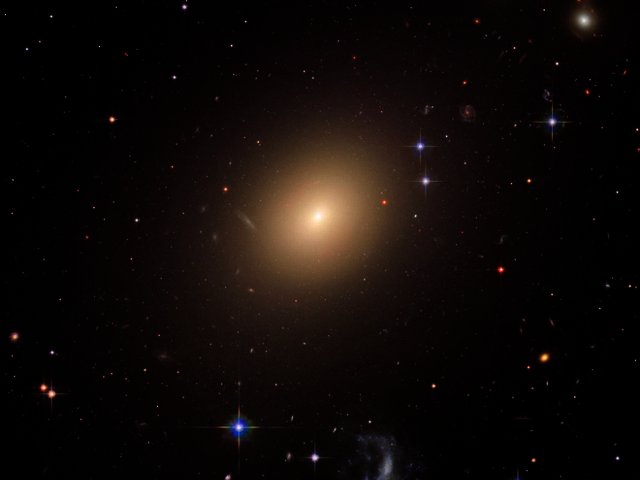PREVIOUS ARTICLENEXT ARTICLE
NEWS

Total number of known stars in the universe triples
By Johan Keyter 3 December 2010 | Categories: news
Recent findings from the W. M. Keck Observatory in Hawaii has astonished the world, with astronomers announcing that the total number of stars in the universe is as much as three times more than previously thought.
The observations have shed light on a staggering number of newly discovered red dwarf stars located in nearby elliptical galaxies. Because these stars are smaller and dimmer than stars such as Sol (our Sun), astronomers haven't been able to detect them in relatively distant galaxies until now.
By using powerful new instruments on the W. M. Keck Observatory, astronomers were finally able to peer through the cosmic veil and detect a huge number of new starts in galaxies located between 50 and 300 million light years away.
“This important study, which uses information at the red end of the optical spectrum, was aided by advances in detector technology that have been implemented at Keck,” said Keck Observatory director Taft Armandroff.
“No one knew how many of these stars there were,” said Pieter van Dokkum, an astronomer at Yale University who led the research. “Different theoretical models predicted a wide range of possibilities, so this answers a longstanding question about just how abundant these stars are.”
It was found that these elliptical galaxies actually contain as much as 20 times more red dwarfs than is found in the Milky Way.
Of course the most significant aspect of these findings is that it boosts the number of planets that might support life in the universe by an unprecedented number, as each of these stars has its own string of planets, just like the Sun with its local planets.
Astronomers recently discovered the first exoplanet (a planet outside of our solar system) that may be capable of harbouring life orbiting a red dwarf star called Gliese 581.
“There are possibly trillions of Earths orbiting these stars,” van Dokkum said, adding that the red dwarfs they discovered, which are typically more than 10 billion years old, have been around long enough for complex life to evolve. “It’s one reason why people are interested in this type of star.”
As the number of known stars and planets in our universe increases, so too does the chances of finding intelligent extraterritorial civilizations. In the following video, the famed late astronomer, Carl Sagan, uses the Drake equation to speculate on the possible number of intelligent civilizations which may be present in our Milky Way alone. A highly insightful watch if you want some brain food before the start of the weekend.
USER COMMENTS
Most Read Articles
Read

Magazine Online
TechSmart.co.za is South Africa's leading magazine for tech product reviews, tech news, videos, tech specs and gadgets.
Start reading now >
Download latest issue
Have Your Say
What new tech or developments are you most anticipating this year?
New smartphone announcements (44 votes)
Technological breakthroughs (29 votes)
Launch of new consoles, or notebooks (14 votes)
Innovative Artificial Intelligence solutions (29 votes)
Biotechnology or medical advancements (24 votes)
Better business applications (160 votes)



